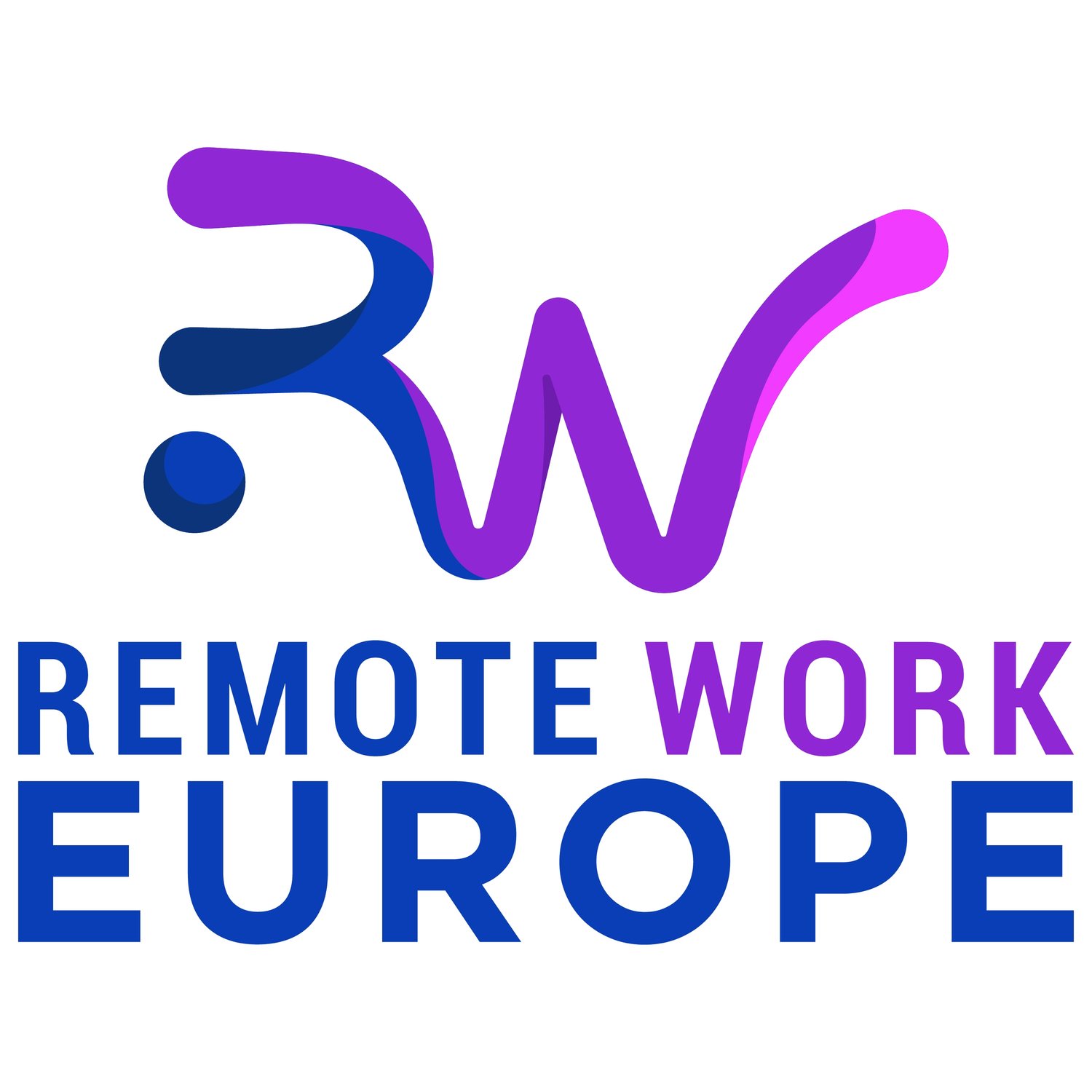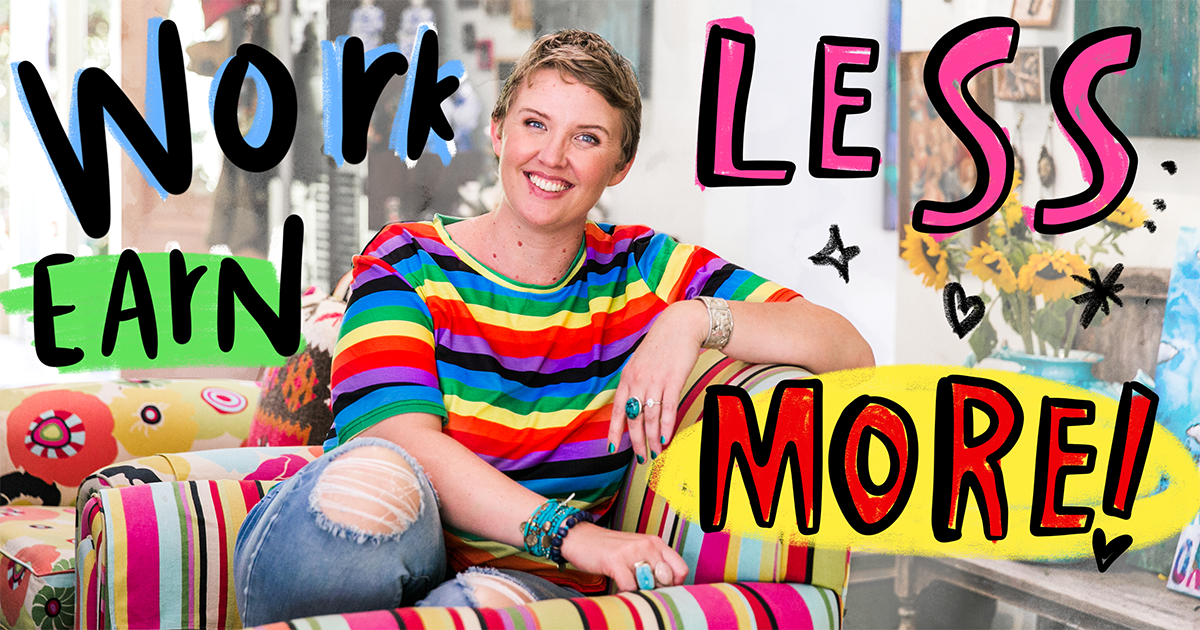Streamlining Remote Work And Saving Energy: Blending, Balancing, and Building
I talk a lot about how I prefer an integrated style of life and work, with few hard boundaries between the two. While that’s my personal preference, I love helping people create the blended work-life design that works best for them. This is the kind of thing I talk about with my coaching clients and in Connected, and it really is incredibly personal, exactly what that recipe of activities ends up looking like. It might even vary over time, lifestage, experience, or season.
Some people do better with more separation overall, and benefit from creating boundaries and structures in their life that support the way they think and operate, but everyone’s lines in the sand are different. A lot of the lazy listicles written about working from home that spewed across the internet in 2020 mixed up advice to all different sorts of people, and came out with things like ‘wear business clothes when you work at home so you feel more professional’, which sounds utterly ridiculous to most long-term remote workers - and yet, I have coached people who definitely need to design in harder work-life edges than I would thrive in, like strictly dedicated work places and devices.
The main thing is to find your own blend, and ignore the generic advice. For me, I will cheerfully blend work and life almost anywhere, but I rarely do anything but Actual Work on my laptop, nor do I bring it into the bedroom - at least when I am home, because if I’m travelling then all rules go out the window anyway.
As someone balancing freelance client work (involving tight journalistic deadlines), building a never-ending community project (Remote Work Europe!) and managing intersecting chronic health situations which affect energy and focus, I’m often asked how I “get everything done.” But the truth is, I don’t. I’ve learned the hard way that I can’t do it all—at least not without burning out. This is why I’m passionate about the concept of streamlining work, automating, prioritising the essential tasks, and maximising your energy by any means possible. I don’t just mean strong Spanish coffee - I can only handle a limited dose of those anyway, because not messing up my fragile sleep is a core component in this blend at all times!
I wanted to respond to the “how do you do it all?” question and try to paint a picture of a typical day or week in my working life somehow, but it’s very hard to find a typical week to illustrate that with. Maybe that’s the point, and I should try and do something like documenting a week in real-time, to show rather than tell how I might be drafting an article for a client, but while I am researching it come across something that might be useful for an upcoming podcast so ensure that that is systematically captured, or while I am sharing the client article on social media I am also considering how to angle that to support my personal brand and positioning for Remote Work Europe and an event I want to be invited to speak at on a similar topic…. But despite it looking like I do a lot of very different things, they’re all ultimately closely linked to the idea of supporting location independent living and borderless business. I am lucky enough to be able to choose to work with clients who align with this goal, and are part of the same overall movement.
As part of my response to this ‘FAQ’ and its variations I was also thinking about ways to teach the sometimes ruthless ways I have learned to prioritise what I actually do on a daily basis, from saying no to things to eliminating busywork to how I measure whether what I am doing is even effective.
But when I looked into what was already out there over the summer, I came across Leonie Dawson's course Work Less, Earn More course on pretty much exactly this topic.
I took the course myself and found myself shouting ‘yes, yes!’ at the screen over and over (lucky I wfh, right?) It was one of those spine-tingling moments like when I first read the 4 Hour Work Week (ha!) or Getting Things Done. Someone had clearly reached into parts of my heart and mind I hadn’t even expressly connected with myself, and put them together and offered them for sale already.
I knew it would resonate with so many people in my community—especially remote workers who want to work to live, not live to work. The course teaches how to focus on what really moves the needle while shedding the rest, whatever it is you do for a living. It's designed to help you regain control of your time, so you’re not caught in the hamster wheel of endless to-do lists. This approach is crucial for anyone working remotely, where boundaries between work and life can easily blur.
And so, in the spirit of NOT doing busywork or reinventing the wheel, I would rather send you to Leonie, than write my own book or course covering the same ground.
Why I’m Recommending This Course
Leonie Dawson’s approach aligns with what I’ve been practising and refining over the years, and I believe her method will bring value to anyone who wants to work smarter, not harder. Remote work, by its nature, can often create the pressure to overdeliver, since you don’t have the clear-cut hours of an office environment. So many remote workers I meet, especially freelancers (but this applies equally to employees trying to prove their productivity) are driven high achievers, with a tendency to want to overdeliver, sometimes to the detriment of our own wellbeing.
This course offers practical strategies to combat that.
People teach stuff in different ways, and I know that and not every one of my audience will resonate with Leonie’s style. Personally I really love her no BS sweary Aussie approach, which holds you firmly accountable, but with the sense of a warm rainbow hug at the same time. She is also very successful financially, and quantifies this in a way that my intrinsic British hangups would never allow - and when someone is telling you that you may need to actually DO LESS, this is really powerful proof of the pudding.
So I urge you to check out Work Less, Earn More, and learn all about:
Energy Efficiency: Remote workers often juggle multiple responsibilities, and Leonie’s course is designed with energy management in mind. This is particularly important for people dealing with any health constraints, as it teaches how to conserve energy for what matters most.
The 80/20 Rule: We’ve all heard about the 80/20 principle (20% of your efforts produce 80% of your results), but putting it into action can be challenging. Leonie breaks down how to apply it effectively in your day-to-day work, helping you cut out the unnecessary tasks that drain your energy and focus on the tasks that truly count. Putting this into practice actually led to me firing a client earlier this year… And I am relieved that I did.
Work-Life Balance: If you’re working remotely, there’s often a temptation to fill every moment of your day with work, especially when your home is your office. This course addresses how to reclaim your personal time and prioritize balance, something I know many of us strive for.
Being Actionable and Realistic: The strategies in this course aren’t pie-in-the-sky ideas—they’re steps you can take right away. Whether you’re a freelancer, solopreneur, or managing multiple projects, Leonie provides clear guidance on how to streamline your workday.
I should stress that this is not a course about remote work, or about freelancing/entrepreneurship (though I believe Ms Dawson personally ticks both boxes herself incidentally.) But if you're a remote worker or freelancer who feels like your workday never really ends, that the only way to earn more is somehow to find more hours to do earn it in, or if you’re simply looking for ways to conserve your energy, I highly recommend checking it out. It’s an investment in your well-being, which is just as important as any investment in your business.
The links on this page to Leonie’s course are affiliate links. This means that if you sign up using them, she pays me a referral fee. The course costs you exactly the same as if you Googled it and found it yourself just like I did. But if you like a bit of positive karma, and you want to support the running costs of Remote Work Europe, I would be super grateful if you’d use this link, and those of any of our regular partners 🌟✨


